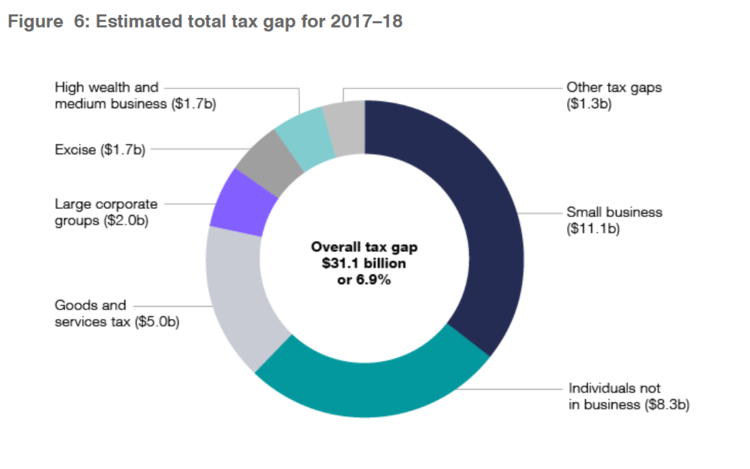This evening, enjoying a glass of red wine from my favourite winery, something came across my screen that would sour my evening. It wasn’t Josh Frydenberg’s face… no no. It was what was written below. This is a bit different to my normal articles – but tries to express the frustrations of the industry.
In my previous article, I mentioned an example of a small business who had lost 60% of their income but facing a wage bill 3x higher than normal due to being required to front the first 2 jobkeeper payments. There are countless similar stories in the media
The Government, unable to implement such a large scheme quickly, offloaded its funding and processing responsibilities to the mums and dads of Australia – requiring each one of them to become experts in the tax and GST Acts, Fairwork and HR laws, banking and finance – all within a fortnight.
I’ve been fairly understanding of the ‘policy on the fly’ we’re seeing – but tonight I’ve decided to share what accountants are feeling.
As we complete many JobKeeper applications today, and our staff return over the weekend to keep processing – one thing has become clear: no 2 situations are the same, and each require careful analysis of the myriad of complex rules, guides, instruments released from the PM, the Treasurer, the Treasury, the ATO etc.
Over the last 48 hours, we thought we had finally locked the rules down and the JobKeeper workflow freight train started to pick up speed. It started of slow, as we made sure we had everything covered, but by this evening it was starting to hum along.
As we broke for dinner, we were confident we’ll get the best result for our clients. This meant we’d had identified eligible businesses, identified eligible employees and advised our clients to make the necessary catchup payments. Many small businesses by this afternoon had started making catch up payments, so they could be reported by next Wednesday/JK-Day (30 April) in STP.
But Josh had other ideas – he issued his latest JobKeeper media release this evening. There were some sensible amendments, like expanded rules for service entities, flexibility for NFPs (charities, religious practitioners, Foreign NGOs) that the industry was asking for, and a few small other changes – these will now keep all those accountants hoping for a break busy over the weekend.
But this one paragraph is the cause of my latest grievance. Please read and let it sink in – remember all the small businesses that have had to fund junior casuals, from their home loans or personal credit cards
Full time students aged 16 and 17 years old: As noted in the explanatory statement to the existing rules, the benefit of the JobKeeper payment to workers over the age of 16 is justified for those who are financially independent and who require the security provided by participation in the JobKeeper scheme and the maintenance of the working relationship that it affords. The rules will provide that full time students who are 17 years old and younger, and who are not financially independent, are not eligible for the JobKeeper Payment. This clarification will apply prospectively, which would mean an eligible employer that has already met the wage condition of paying such an employee $1,500 for a fortnight could be entitled to a JobKeeper Payment in arrears for that fortnight.
On the whole, it seems a reasonable adjustment and a fair result. But literally 6 days before JK-Day… or 2/3 business days now? And worse – a Friday night, after I’d opened my favourite bottle of wine.
This should have been picked up in the first draft that was scribbled down on a napkin at the Parliament House bar. Everyone could see that this was neither equitable nor attainable. A mortgage holder with 2 kids getting paid the same amount as a school student; a small business needing to fund 10’s of casuals who, due to a Fairwork Act technicality, needed to receive a JobKeeper; legitimate employees connected with an employer excluded due to being a casual rather than a part-timer (a casual had to be hired before 1 March 2019; a part-timer could be hired on 29 February 2020).
While a reasonable adjustment – the devil is always in the detail when we’ve got policy on the fly:
– how do I, as an accountant helping my client determine eligibility, determine if you’re in school full time or part-time
– what about if you’re 18 and at school
– what if you’re at school and 17 years old now, but you will be 18 years old in the next 6 months (i.e. you received April JobKeeper because it was already paid, nothing in May/June, but turned 18 in July… do I need to pay under one in / all in?
– what if you drop out of school, but you weren’t originally eligible. Are you now eligible?
– what if you only paid them some of the $3000, but not all of it – do you still need to top up
– what if you’ve made the payments, but haven’t enrolled in the ATO system?
The modelling for one client tonight, shows their payroll for April (inc. JKP) would have dropped from $42,000 to $22,000.
I’m not one to look a gift horse in the mouth, but hopefully the horse stays still enough for me to have a glance.
There is NO excuse for a policy pivot of this size, and a mere 6 days away from JK-Day, to be released on Friday night at 8pm. And make no mistake – this is a complete 180 degree reversal on what we’ve heard for over a month: initially, the PM proudly stood in front of the press gallery, announcing the JobKeeper scheme as the panacea for the economy – it will keep everyone employed at a minimum of $750 and be the fuel of the economy. The Treasurer, the Treasury and the ATO all repeated the same “one in / all in” principle in every release. The media, the professional bodies, unions and small businesses asked similar questions about the young casuals – but it was clear that there was to be NO flexibility, even for a casual who would work only 3 hours a fortnight. They, with the other employees, MUST BE PAID $3000 for April, or no one gets JobKeeper. No back payments allowed. The PM said “go to your bank” – yet the banks hadn’t gotten that memo until the 11th hour / 6 days out (sneaky NAB had purchased 1800 JOBKEEPER for their 24 hour hotline).
After attending webinars, tele-conferences, speaking with colleagues, it is apparent that Treasury is a closed shop. Experts in the field were jumping up and down, private practitioners could see the issues in the first releases, the media asked good, tough questions – but Treasury would not listen.
Insofar my criticism has been focussed on Treasury, but the ATO is not without criticism. It has at last released its alternative tests – in the evening on Thursday the 23rd of April. When over 1,000 Tax Institute members, like our senior team, attended a webinar on Friday morning – the slides on the presentation hadn’t been updated for the tests. How can such an important test be issued less than 7 days before JK-Day, without a heads up to the professional bodies? Small releases to assist accountants to spread the workload of interpreting, reviewing, and applying the tests would have been preferable than all the tests being issued at once. Clients who did not pass JobKeeper earlier this week, now pass – so the merry-go-round starts again. With these changes, our working papers, templates and workflow all change.
Finally I’ll also mention changes to the Business Boost – we were told businesses weren’t eligible for the Business Boost due to PAYG/W registrations or extension dates, but now the ATO says they are under a discretion; but no information is provided how to apply for said discretion. The banks were to provide low interest, unsecured, $250k loans. Not only have they not been released to the market, but they are neither low interest, unsecured or a guarantee you’ll get $250k.
While the Government response to COVID19 should be commended in many aspects – just look at how Australia and New Zealand are placed – the policy intent and technical implementation of hundreds of billions of stimulus dollars has been flawed since the first day. With a little leeway (e.g. back payments, reporting and enrolling requirements etc.), input from professionals on the ground on how to implement, and Treasury putting aside its tin ear, I truly believe the JobKeeper Scheme could have been initially drafted as a great scheme.


